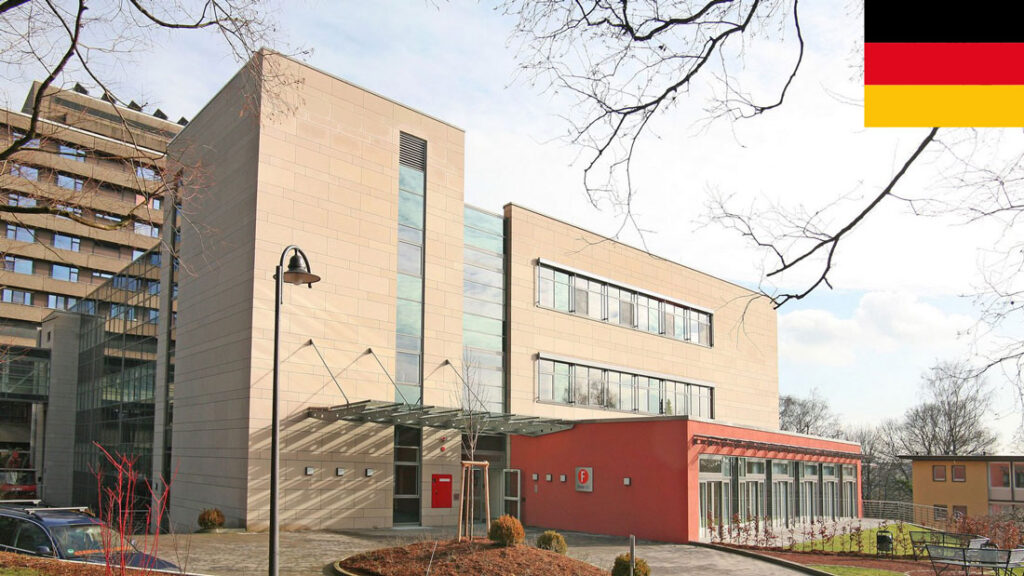Rehabilitation Services for Glaucoma Patients in the Philippines
Introduction to Glaucoma and Its Effects
Are you or someone you know living with glaucoma? If so, you\’re not alone. Glaucoma is a prevalent eye condition that affects millions of people around the world. It can cause progressive damage to the optic nerve, leading to vision loss if left untreated. But here\’s the good news: there are rehabilitation services available in the Philippines specifically designed to help glaucoma patients regain their independence and improve their quality of life.
In this blog post, we\’ll explore what rehabilitation services for glaucoma patients entail, discuss their availability in the Philippines, delve into different types of rehabilitation services offered, highlight the benefits they provide, and address some challenges in accessing these services. So sit back, relax your eyes for a moment (no pun intended), and let\’s dive into this informative journey together!
Understanding Rehabilitation Services for Glaucoma Patients
Understanding Rehabilitation Services for Glaucoma Patients
Glaucoma is a chronic eye disease that damages the optic nerve, leading to vision loss and blindness if left untreated. While there is no cure for glaucoma, rehabilitation services play a crucial role in helping patients manage their condition and maintain their quality of life.
Rehabilitation services for glaucoma patients aim to enhance independence, mobility, and overall functioning. These services encompass various interventions designed to address the specific needs of each individual. They may include low vision therapy, orientation and mobility training, assistive technology devices, counseling and support groups.
Low vision therapy focuses on maximizing functional vision through the use of specialized techniques and aids such as magnifiers or telescopes. This helps individuals with glaucoma make the most of their remaining sight while performing daily activities like reading or cooking.
Orientation and mobility training teaches patients how to navigate safely in their environment despite visual impairments. Techniques like using a white cane or learning auditory cues can greatly improve independence when moving around indoors or outdoors.
Assistive technology devices are also an integral part of rehabilitation services for glaucoma patients. These devices range from talking watches or clocks to smartphone apps that provide audio descriptions of surroundings or help with medication management.
Counseling and support groups offer emotional support to individuals living with glaucoma by providing them with an opportunity to share experiences, fears, and frustrations in a safe space. This can be immensely helpful in coping with the psychological impact that comes along with progressive vision loss.
In conclusion,
Rehabilitation services play a vital role in improving the lives of glaucoma patients by empowering them to adapt effectively despite visual impairments. By addressing their unique needs through low vision therapy, orientation and mobility training, assistive technology devices, counseling sessions,and support groups; these services enable individuals affected by glaucoma to lead fulfilling lives despite its challenges.
Availability of Rehabilitation Services in the Philippines
Availability of Rehabilitation Services in the Philippines
When it comes to rehabilitation services for glaucoma patients, access can vary depending on where you are located. In the Philippines, while there may be some challenges in accessing these services, there are still options available.
In major cities like Manila and Cebu, there are specialized eye clinics and hospitals that offer comprehensive rehabilitation programs for glaucoma patients. These facilities have trained professionals who understand the unique needs of individuals with glaucoma and provide personalized treatment plans.
Additionally, government-run healthcare institutions across the country also offer rehabilitation services for glaucoma patients. While there may be limitations in terms of resources and capacity, these facilities strive to provide essential care to those in need.
Furthermore, non-governmental organizations (NGOs) play a crucial role in bridging gaps in accessibility by offering free or subsidized rehabilitation services for underserved communities. These NGOs often partner with local clinics or conduct outreach programs to ensure that even remote areas receive necessary support.
While availability may not be uniform throughout the country, efforts are being made to provide access to rehabilitation services for glaucoma patients across different regions of the Philippines. It is important for individuals with glaucoma and their families to reach out to local healthcare providers or organizations specializing in eye care to explore available options nearby
Types of Rehabilitation Services for Glaucoma Patients in the Philippines
Types of Rehabilitation Services for Glaucoma Patients in the Philippines
Glaucoma is a chronic eye condition that requires comprehensive care to manage its effects on vision. Rehabilitation services play a vital role in helping glaucoma patients adapt and regain independence in their daily lives. In the Philippines, there are several types of rehabilitation services available to support individuals with this condition.
One type of rehabilitation service commonly provided to glaucoma patients is vision therapy. This specialized program focuses on improving visual skills and enhancing visual perception through various exercises and techniques. Vision therapists work closely with patients to develop personalized treatment plans aimed at strengthening eye muscles, improving coordination, and maximizing visual potential.
Another essential form of rehabilitation for glaucoma patients is orientation and mobility training. This type of therapy equips individuals with techniques to navigate their environment safely despite having limited vision. Orientation specialists teach skills such as using assistive devices like canes or guide dogs, understanding auditory cues, and developing spatial awareness.
Additionally, low-vision rehabilitation plays a crucial role in assisting glaucoma patients by utilizing adaptive aids and technologies tailored to their individual needs. These may include magnifiers, telescopic lenses, talking watches or clocks, large-print materials, and screen-reading software for computers or smartphones.
Furthermore, psychological counseling services are often incorporated into rehabilitation programs for glaucoma patients in the Philippines. Coping with changes in vision can be challenging emotionally; therefore, mental health professionals offer guidance and support to help individuals process their feelings about living with glaucoma.
These various types of rehabilitation services contribute significantly towards improving the quality of life for people affected by glaucoma in the Philippines. By addressing both physical limitations and emotional well-being through multidisciplinary approaches, these services empower individuals to maximize their remaining vision capabilities while adapting successfully to any challenges they may face along the way.
Benefits of Rehabilitation for Glaucoma Patients
Glaucoma can have a significant impact on a person\’s vision and overall quality of life. However, rehabilitation services for glaucoma patients can play a crucial role in helping them adapt to their visual changes and maintain their independence.
One of the main benefits of rehabilitation for glaucoma patients is improved functional abilities. Through specialized training and assistance, individuals with glaucoma can learn techniques to navigate their environment safely and efficiently. This may include learning how to use assistive devices such as magnifiers or adaptive technology that can enhance visual tasks like reading or writing.
Rehabilitation also provides emotional support for glaucoma patients who may be experiencing feelings of frustration, anxiety, or depression due to their condition. Participation in support groups or counseling sessions allows individuals to connect with others facing similar challenges, share experiences, and gain valuable coping strategies.
Another advantage of rehabilitation services is the opportunity for education and information about glaucoma management. Patients can receive guidance on medication adherence, lifestyle modifications, and regular eye care appointments that are essential for controlling the progression of the disease.
Furthermore, by engaging in rehabilitation exercises specifically designed for people with glaucoma, patients may experience improvement in visual function over time. These exercises target specific areas like peripheral awareness or contrast sensitivity through repetitive practice that stimulates neural connections within the visual system.
Rehabilitation services offer numerous benefits to glaucoma patients by enhancing functionally skills,, providing emotional support,, offering education on managing the condition,, improving visual capabilities over time,. Accessing these services is vital for individuals living with glaucoma to maximize their potential despite vision loss.. By addressing both physical limitationsand psychological well-beingwellbeing , they help improve overall quality of life..
Challenges in Accessing Rehabilitation Services in the Philippines
Accessing rehabilitation services for glaucoma patients in the Philippines can pose several challenges. One of the main hurdles is the limited availability and accessibility of these services, particularly in rural areas. Many rehabilitation centers are concentrated in urbanized regions, making it difficult for patients living outside these areas to access the care they need.
Another challenge is the lack of awareness about rehabilitation services among glaucoma patients and their caregivers. Many people may not even be aware that such services exist or understand their potential benefits. This lack of awareness can lead to delays in seeking treatment or receiving appropriate care.
The cost of rehabilitation services is also a significant barrier for many individuals. Glaucoma treatment itself can already be expensive, and adding additional expenses for rehabilitation can further strain a patient\’s financial resources. Limited health insurance coverage for such services adds to this burden.
Furthermore, there may be a shortage of trained healthcare professionals specializing in glaucoma rehabilitation in certain areas of the country. This scarcity could result in long waiting times for appointments or difficulties finding qualified providers nearby.
Transportation issues are another obstacle that glaucoma patients face when accessing rehabilitation services. Some individuals may have difficulty traveling long distances due to physical limitations or lack of transportation options available to them.
Addressing these challenges requires collaborative efforts from various stakeholders including government agencies, healthcare providers, non-profit organizations, and advocacy groups. Increased funding and support should be allocated towards expanding access to affordable rehabilitation services across different regions in the Philippines.
Educational campaigns aimed at raising awareness about glaucoma rehabilitation should also be conducted targeting both patients and healthcare professionals alike.
Improving transportation infrastructure and providing assistance programs for those who struggle with mobility issues would help address some logistical barriers faced by glaucoma patients seeking rehab treatments.
By overcoming these challenges, we can ensure that all individuals affected by glaucoma have equal opportunities to receive comprehensive rehabilitative care regardless of their location or financial status
Recommendations for Improving Rehabilitation Services for Glaucoma Patients
Recommendations for Improving Rehabilitation Services for Glaucoma Patients
1. Increase Awareness and Education: One of the key steps in improving rehabilitation services for glaucoma patients is to increase public awareness and education about the condition. This can be done through campaigns, workshops, and educational materials that focus on early detection, treatment options, and the importance of rehabilitation.
2. Strengthen Collaboration: Healthcare professionals, including ophthalmologists, optometrists, and rehabilitation specialists should work together to develop comprehensive care plans for glaucoma patients. By coordinating efforts and sharing expertise, they can ensure that patients receive holistic support throughout their treatment journey.
3. Expand Access to Rehabilitation Facilities: To improve access to rehabilitation services, there is a need to establish more specialized facilities across different regions in the Philippines. This will help reduce travel time and costs for patients who may have limited mobility or financial resources.
4. Enhance Training Programs: Healthcare providers involved in glaucoma management should undergo regular training programs to stay updated with the latest advancements in rehabilitation techniques and technologies. This will enable them to provide high-quality care tailored specifically to meet the needs of glaucoma patients.
5. Implement Telehealth Solutions: With advancements in technology, implementing telehealth solutions can greatly benefit glaucoma patients by providing remote consultations with healthcare professionals and access to rehabilitation exercises or therapy sessions from the comfort of their homes.
6. Improve Insurance Coverage: It is crucial for insurance companies to expand coverage options specifically designed for glaucoma-related treatments and rehabilitation services. This will alleviate financial burdens on patients seeking these essential services.
7.
Enhance Research Efforts: Continued research into new therapies and interventions aimed at enhancing visual function recovery among glaucoma patients is necessary.
The findings from such studies could guide improvements in existing rehabilitative strategies or even lead to breakthroughs that could revolutionize how we approach rehabilitating individuals affected by this condition.
By implementing these recommendations collectively, we can strive towards a future where glaucoma patients in the Philippines have
Conclusion
Conclusion
Glaucoma is a serious eye condition that can have significant effects on a person\’s vision and overall quality of life. Rehabilitation services play a crucial role in helping glaucoma patients adapt to their visual impairments and regain independence.
While there are rehabilitation services available for glaucoma patients in the Philippines, there are still challenges to accessing these services. Limited awareness about the availability of such programs and the high cost of treatment can be barriers for many individuals.
To improve rehabilitation services for glaucoma patients in the Philippines, it is essential to raise awareness about these programs through educational campaigns and outreach efforts. Additionally, implementing more affordable options or providing financial support for those who need it would greatly benefit individuals seeking rehabilitation services.
By addressing these challenges, we can ensure that all glaucoma patients in the Philippines have access to comprehensive rehabilitation care. Through early detection, proper management, and effective rehabilitation strategies, individuals with glaucoma can lead fulfilling lives despite their visual impairments.
Remember, if you or someone you know has been diagnosed with glaucoma, do not hesitate to seek out professional help from eye care specialists and inquire about rehabilitation services available near you. With proper support and guidance from healthcare professionals, navigating life with glaucoma can become more manageable.



